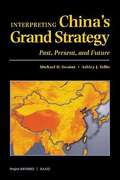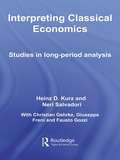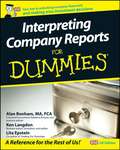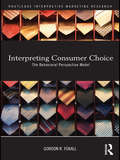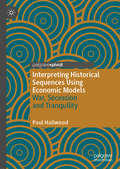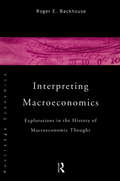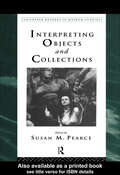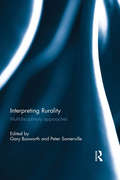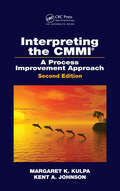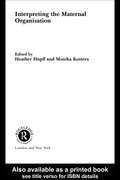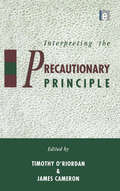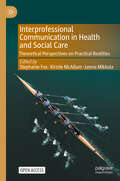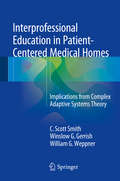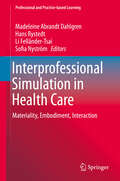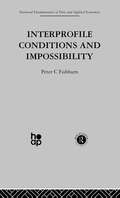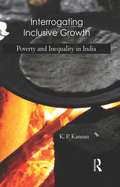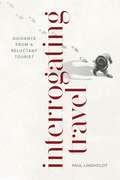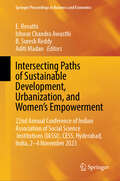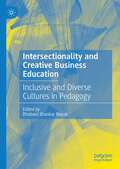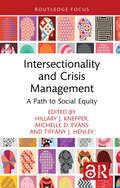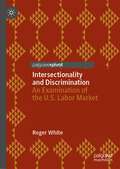- Table View
- List View
Interpreting China's Grand Strategy: Past, Present, and Future
by Sara A. Daly Peter W. Greenwood Michael D. SwaineChina's continuing rapid economic growth and expanding involvement in global affairs pose major implications for the power structure of the international system. To more accurately and fully assess the significance of China's emergence for the United States and the global community, it is necessary to gain a more complete understanding of Chinese security thought and behavior. This study addresses such questions as: What are China's most fundamental national security objectives? How has the Chinese state employed force and diplomacy in the pursuit of these objectives over the centuries? What security strategy does China pursue today and how will it evolve in the future? The study asserts that Chinese history, the behavior of earlier rising powers, and the basic structure and logic of international power relations all suggest that, although a strong China will likely become more assertive globally, this possibility is unlikely to emerge before 2015-2020 at the earliest. To handle this situation, the study argues that the United States should adopt a policy of realistic engagement with China that combines efforts to pursue cooperation whenever possible; to prevent, if necessary, the acquisition by China of capabilities that would threaten America's core national security interests; and to remain prepared to cope with the consequences of a more assertive China.
Interpreting Classical Economics: Studies in Long-Period Analysis
by Neri Salvadori Heinz KurzFirst Published in 2007. Routledge is an imprint of Taylor & Francis, an informa company.
Interpreting Company Reports For Dummies
by Lita Epstein Alan Bonham Ken LangdonCompany financial reports are a key resource for investors, helping them uncover priceless information about a company's profitability, or lack thereof, from the figures as well as through other non-monetary indicators. Details of lawsuits, changes in accounting methods, liquidations, and mergers and acquisitions can all be ways of detecting red flags if you know where to look.However the jargon and financial footnotes in financial reports can be difficult to decipher, and this For Dummies guide on the subject will help readers to understand company reports and make sensible investment choices based on publicly held information.Taking you step-by-step through the finer points of financial reports, this straightforward guide will help you get to grips with the most accurate way to wade through the numbers, judge a company's performance, and make profitable investment decisions.This UK Adaptation focuses on the UK financial market, with the FTSE index as the focus of the book.
Interpreting Consumer Choice: The Behavioural Perspective Model (Routledge Interpretive Marketing Research)
by Gordon FoxallInterpretive consumer research usually proceeds with a minimum of structure and preconceptions. This book presents a more structured approach than is usual, showing how a simple framework that embodies the rewards and costs associated with consumer choice can be used to interpret a wide range of consumer behaviours from everyday purchasing and saving, innovative choice, imitation, ‘green’ consumer behavior, to compulsive behaviors such as addictions (to shopping, to gambling, to alcohol and other drugs, etc). Foxall takes a qualitative approach to interpreting behavior, focusing on the epistemological problems that arise in such research and emphasizing the emotional as well as cognitive aspects of consumption. The author argues that consumer behaviour can be understood with the aid of a very simple model that proposes how the consequences of consumption impact consumers’ subsequent choices. The objective is to show that a basic model can be used to interpret consumer behaviour in general, not in isolation from the marketing influences that shape it, but as a course of human choice that is dynamically linked with managerial concerns.
Interpreting Historical Sequences Using Economic Models: War, Secession and Tranquility
by Paul HallwoodThis Palgrave Pivot presents theoretical models that explain common historical sequences, such as wars of secession, the rise and fall of empires, and international war. The book uses a rational choice model to frame the incentives of specific groups coming together in a polity or leaving it. These incentives are then set in a theoretical framework to determine the outcome—unity or secession, peace or war—and are demonstrated through historical examples. The book provides two longer case studies looking directly at motives for and against secession: the first on the American Civil War from the point of view of the Confederacy, and the second on efforts by the UK government to stem the tide of Scottish independence. Another case study discusses peacekeeping as aimed at reducing the costs of secessionist wars. With its accessible use of economic theory and ability to bring to life real-world examples of conflict and secession, this book is ideal supplementary reading for courses in international relations, conflict studies, global economics and economic history.
Interpreting Macroeconomics: Explorations in the History of Macroeconomic Thought
by Roger E. BackhouseInterpreting Macroeconomics explores a variety of different approaches to macroeconomic thought. The book considers a number of historiographical and methodological positions, as well as analyzing various important episodes in the development of macroeconomics, before during and after the Keynesian revolution. Roger Backhouse shows that the full richness of these developments can only by brought out by approaches which blend both relativism and absolutism, and historical and rational reconstructions. Examples discussed include Hobson, Keynes and Friedman.
Interpreting Objects and Collections (Leicester Readers in Museum Studies)
by Susan PearceThis volume brings together for the first time the most significant papers on the interpretation of objects and collections and examines how people relate to material culture and why they collect things. The first section of the book discusses the interpretation of objects, setting the philosophical and historical context of object interpretation. Papers are included which discuss objects variously as historical documents, functioning material, and as semiotic texts, as well as those which examine the politics of objects and the methodology of object study. The second section, on the interpretation of collections, looks at the study of collections in their historical and conceptual context. Many topics are covered such as the study of collecting to structure individual identity, its affect on time and space and the construction of gender. There are also papers discussing collection and ideology, collection and social action and the methodology of collection study. This unique anthology of articles and extracts will be of inestimable value to all students and professionals involved in the interpretation of objects and collections.
Interpreting Rurality: Multidisciplinary Approaches
by Peter Somerville Gary BosworthThe British countryside is a national institution; most people aspire to live there, many people use it for leisure and recreation and we can all watch rural life played out on our television screen, read about it in novels or consume its imagery in art and cinematography. The aim of this book is to explore the way that these aspirations and perceptions influence the way that the term "rural" is interpreted across different academic disciplines. Definitions of rural are not exact, leaving room for these interpretations to have a significant impact on the meanings conveyed in different areas of research and across different economic, social and spatial contexts. In this book contributors present research across a range of subjects allowing critical reflections upon their personal and disciplinary interpretations of "rural". This resulting volume is a collection of diverse chapters that gives an emergent sense of how the notion of "rural" changes and blurs as the disciplinary lens is adjusted. In drawing together these strands, it becomes clear that human relations with rural space morph materiality into highly complex representations wherein both disadvantage and social exclusion persist within a rurality that is also commodified, consumed and cherished.
Interpreting WTO Agreements
by Asif H. QureshiThis book was first published in 2006. The case law of the World Trade Organization is now extensive, running into over one hundred cases and thousands of pages. The interpretative process involved in this jurisprudence constitutes a form of legislative activity, and is therefore of great significance not only to the parties to disputes, but to the membership of the WTO. Qureshi sets out here to identify some of the underlying problems of interpreting WTO agreements, within the context of different issues, problems, objectives and disciplines, and to comprehensively examine the underlying conditions for the interpretation of WTO agreements. He focuses on: the apparatus of interpretation in the WTO; the manner of interpreting institutional norms, national measures, and exceptions; the manner of facilitating the development objective; the manner of reconciling conflicting norms through interpretation; and finally the manner of interpreting the trade remedies agreements. Various perspectives on interpretation are proffered, particularly that of justice and development.
Interpreting the CMMI (R): A Process Improvement Approach, Second Edition
by Margaret K. Kulpa Kent A. JohnsonTaking a broad approach that speaks to experienced and inexperienced process improvement practitioners, CMMI experts and CMMI novices, this second edition thoroughly examines the latest version of the CMMI. Divided into six sections, the text first clarifies the concept of process improvement, makes the case for how and why to employ CMMI, and outlines its structure. It then provides an overview of the process areas, supported by real-world display tables, templates, and charts designed to aid organizations in their improvement efforts. Subsequent sections address measurement issues including basic metrics, statistical process control, and high maturity concerns, as well as SCAMPISM appraisal types.
Interpreting the Maternal Organization (Routledge Studies in Human Resource Development)
by Monika Kostera Heather HöpflOver the past ten to fifteen years there has been an increasing interest in emotion in organizations, in diversity, ethics, care and the ubiquitous pursuit of quality. These concerns, however, have consistently been reduced to issues of management and regulation. There is now a growing need to confront issues related to the dehumanization of organizations. This book brings these issues together, presenting an original construction of the organization via an emphasis on the (m)other.This book is not a feminist tract, nor is it primarily about the experiences of women in organizations. It rather argues that conventional representations of the organization are patriarchal, masculine, directed by the animus and that such representations reduce the notion of 'organization' to abstract relationships, rational actions and purposive behaviour. This challenging book will be of essential interest to all critical management theorists. With its innovative approach, it will also appeal to students, teachers, and all those looking for an approach to management that does justice to the complexity, ambivalence and chaos of the world of organizing.
Interpreting the Peace
by Michael Kelly Catherine BakerAnalysing the issues of language that faced international forces carrying out peace operations in Bosnia-Herzegovina in the 1990s, this book examines how differences of language were an integral part of the conflicts in the country and in what way the multinational UN and NATO forces faced their own problems of communication and language support.
Interpreting the Precautionary Principle (The\environmental Law Ser.)
by Timothy O'RiordanViewed from the perspective of environmental management, this study describes the implications and applications of the precautionary principle - a theory of avoiding risk even when its likelihood seems remote. This principle has been employed in the United Nations Framework Convention on Climate Change and the North Atlantic Convention, yet it is not widely understood. This study examines the history and context of the principle, and its applications to law, governmental policies, business and investment, scientific research and international relations.
Interpreting: Developing Your Own Vision--The All-Important Research Phase of Design-Driven Innovation
by Roberto VergantiIn the process of design-driven innovation, developing a privileged relationship with a circle of researchers who will help you determine how customers give meaning to things is the first step. The knowledge and interpretations culled from this group will then help your company create its own vision and conduct internal research and experiments that allow the firm to eventually launch a radical new meaning into the marketplace. This chapter uses examples to show how this process of interpretation and creation may unfold, including Alessi's Tea and Coffee Piazza, Barilla's Beyond Primo Piatto, and Arthur Bonnet's Design Direction Workshops. You will see that design-driven innovation is not the fast creative and brainstorming sessions that are typical of concept generation but rather a deep investigation that, like technological research, escapes attempts to imprison innovation in simple, sequential ten-step rules. This chapter was originally published as chapter 8 of "Design-Driven Innovation: Changing the Rules of Competition by Radically Innovating What Things Mean."
Interprofessional Communication in Health and Social Care: Theoretical Perspectives on Practical Realities
by Stephanie Fox Leena Mikkola Kirstie McAllumThis is an Open Access book. Interprofessional communication remains both under-theorized and under-researched in healthcare contexts. This book aims to fill that gap by offering practitioners, policy makers, interprofessional curriculum builders, and students in the health professions a broadened theoretical understanding and rich empirical examples of interprofessional communication across a range of health and social care contexts. Importantly, this means opening the black box of what it means for interprofessional collaboration to be “effective,” in particular, for complex, collective practices that rely on shared meanings and accountabilities. Divided into three parts, the book brings together the practical and conceptual expertise of scholars and practitioners from the fields of communication, interprofessional education, health and human sciences, and healthcare management.
Interprofessional Education in Patient-Centered Medical Homes
by C. Scott Smith Winslow G. Gerrish William G. WeppnerThis book discusses the application of complex adaptive systems theory to the design and evaluation of patient-centered medical homes (PCMHs). The three defining goals of PCMHs are to spread patient-care roles among healthcare team members, focus on disease prevention and include the patient in the healthcare team. It explains why some PCMH pilots are highly successful while others do not show much benefit, covers specific sub-theories that allow for bracketing of different aspects of the clinic system and highlights strategies by which institutions can engage in this process. Inter professional Education in Patient-Centered Medical Homes is a valuable resource for faculty and managers of health professions teaching clinics, deans of medical and health professional schools and medical administrators.
Interprofessional Simulation in Health Care: Materiality, Embodiment, Interaction (Professional and Practice-based Learning #26)
by Madeleine Abrandt Dahlgren Hans Rystedt Li Felländer-Tsai Sofia NyströmThis book describes and discusses a practice-oriented approach to understanding and researching interprofessional simulation-based education and simulation. It provides empirical findings from research on this topic and is informed by practice-oriented perspectives. It identifies critical features of the simulation practice and discusses how these can be used in reforming simulation pedagogy. The book is divided into three sections. Section 1 sets the scene for understanding the practices of interprofessional simulation-based education and simulation. It provides a theoretical and methodological framework for the conceptualisation of practices and for the empirical studies on which the book is based. Section 2 revisits the dimensions of the simulation process/exercise, i.e. the briefing, simulation, and debriefing, and provides empirical analyses of how the practice of simulation unfolds. Based on these analyses, section 3 identifies and discusses how pedagogies for simulation can be reformed to meet the demands of future healthcare and research.
Interprofile Conditions and Impossibility
by P. FishburnFirst Published in 2004. Routledge is an imprint of Taylor & Francis, an informa company.
Interrogating Inclusive Growth: Poverty and Inequality in India
by K. P. KannanThe high growth performance of the Indian economy since the launch of economic reforms in the early 1990s has been much lauded. But how much of this growth has made its way to the poor? In a radical assessment of ‘inclusive growth’, this book probes the impact of neo-liberal policies on employment, poverty and inequality. It critiques the claim that market-friendly economic reform policies ‘trickle down’ to the poor and reduce poverty and deprivation. The author uses exhaustive data — from the formal and informal sectors — to create a profile of the aam aadmi. He advocates the need for a broad-based growth and development strategy that alone will address the many-sided social and economic inequalities in India. The volume will be useful to scholars and students of economics, development studies, labour studies, and sociology.
Interrogating Travel: Guidance from a Reluctant Tourist
by Paul LindholdtNever in human history has travel been so accessible to so many. But—amid an escalating climate crisis that threatens the homes of vulnerable people across the world—has the human cost of trekking the globe become too high? Paul Lindholdt links firsthand narratives with research about the travel trade, telling stories of his reluctant voyages while arguing that carbon-intensive trips abroad may be offset if adventurers come to know and love the landscapes closer to home. Tourism may be the planet’s largest industry, but Interrogating Travel advises readers to stay mindful of the consequences of their journeys, whether visiting local getaways or some of Earth’s most remote locations.
Intersecting Paths of Sustainable Development, Urbanization, and Women’s Empowerment: 22nd Annual Conference of Indian Association of Social Science Institutions (IASSI), CESS, Hyderabad, India, 2–4 November 2023 (Springer Proceedings in Business and Economics)
by Ishwar Chandra Awasthi E. Revathi B. Suresh Reddy Aditi MadanThis volume is a collection of 14 conference papers discussing India's development story around the three themes of sustainable development goals (SDGs), agricultural productivity and sustainability, and climate change - mitigation and adaptation. The contributions take cognizance of India's increasing growth rate over the past 10 years or so, leading to reduced extreme poverty; virtual elimination of absolute poverty in urban areas; and visible improvements in education, health, sanitation, infrastructure, and energy sectors. The volume unravels how despite the high and sustained economic growth rate achieved by India in the recent past, employment generation has been far from satisfactory. It looks at emerging concerns including rising inequalities, child under-nutrition, and environmental challenges, including the rising frequency of climate change-induced extreme weather events that threaten the progress towards sustainable development. The book discusses pressing societal challenges such as income inequality, climate change, and inclusive development. It presents research on social challenges exacerbated by globalization, emphasizing the need for resilience in diverse geographies as presented by India. The empirical research presented by the book provides pointers to the policymakers on the core issues of the conference.
Intersectionality and Creative Business Education: Inclusive and Diverse Cultures in Pedagogy
by Bhabani Shankar NayakCreative Business Education is emerging rapidly to address the needs of the creative industries including digital media, journalism, advertisement, music, marketing, films, fashion and sports business etc. Inclusive educational praxis, decolonial knowledge traditions and diverse curriculums are central to egalitarian economic development and human empowerment. As such, this edited volume explores how creative business education specifically can help to build a more diverse and inclusive environment for an increasingly diverse body of students and faculty. It discusses how students can be encouraged to succeed and excel, reflecting on the need for academic pedagogies to embrace greater inclusivity for diverse cultures. Advancing different theoretical trends within intersectionality and the limits of its praxis, contributors deal with different forms of inequalities based on class, gender, race, religion and belief, sexual orientation, and disabilities in teaching and learning. It is important to articulate and outline the critical lineages of intersectionality within creative business education and its progressive potentials for pedagogical transformation.
Intersectionality and Crisis Management: A Path to Social Equity (Routledge Focus on Issues in Global Talent Management)
by Hillary J. Knepper Michelle D. Evans Tiffany J. HenleyIntersectionality and Crisis Management: A Path to Social Equity aims to embed the social equity discourse into crisis management while exploring the potential of a new tool, the Integrative Crisis Management Model. Leaders and managers navigate a complex and networked environment of policy-making and action, frequently occurring in real time, under constant media exposure. The pervasive availability of this news on all platforms and devices produces a lingering anxiety about the inevitability of danger. Consequently, crisis affords a time-sensitive exploration of management practices and sheds a critical spotlight on deficiencies that may yield novel approaches to doing business. As the book engages contributing authors who are foremost in their field, it also includes practitioners, students, and junior scholars in a creative new discourse about equity. Bringing these diverse voices together in one volume presents a unique opportunity to generate new insights. Intersectionality provides a framework for understanding how categorizations of people drive social constructs of discrimination and oppression. Each chapter covers a different subject – exploring intersectionality in healthcare, nonprofit management, and human resources – and is accompanied by discussion questions. The book provides something for the classroom, for practitioners, and for scholars who want to include more intersectional thinking into their work.
Intersectionality and Crisis Management: A Path to Social Equity (Routledge Focus on Issues in Global Talent Management)
by Hillary J. Knepper Michelle D. Evans Tiffany J. HenleyIntersectionality and Crisis Management: A Path to Social Equity aims to embed the social equity discourse into crisis management while exploring the potential of a new tool, the Integrative Crisis Management Model. Leaders and managers navigate a complex and networked environment of policy-making and action, frequently occurring in real time, under constant media exposure. The pervasive availability of this news on all platforms and devices produces a lingering anxiety about the inevitability of danger. Consequently, crisis affords a time-sensitive exploration of management practices and sheds a critical spotlight on deficiencies that may yield novel approaches to doing business.As the book engages contributing authors who are foremost in their field, it also includes practitioners, students, and junior scholars in a creative new discourse about equity. Bringing these diverse voices together in one volume presents a unique opportunity to generate new insights. Intersectionality provides a framework for understanding how categorizations of people drive social constructs of discrimination and oppression. Each chapter covers a different subject – exploring intersectionality in healthcare, nonprofit management, and human resources – and is accompanied by discussion questions. The book provides something for the classroom, for practitioners, and for scholars who want to include more intersectional thinking into their work.Chapters 1 and 6 of this book are freely available as a downloadable Open Access PDF at http://www.taylorfrancis.com under a Creative Commons Attribution-Non Commercial-No Derivatives (CC-BY-NC-ND) 4.0 license.
Intersectionality and Discrimination: An Examination of the U.S. Labor Market
by Roger WhiteIn 1989, Kimberlé Crenshaw coined the term “intersectionality” to describe the interdependent and overlapping systems of discrimination and disadvantage that result from the interconnected nature of social categorizations. These categories include, but are not limited to, disability, gender identity, nationality, race, and socioeconomic class. In recent years, we have witnessed increased societal interest in the notion of equal economic, political, and social rights. This has commonly manifested in a desire for equality of opportunity (i.e., social justice). This book applies an intersectional approach to examine a specific facet of inequality – namely, the presence and magnitude of wage discrimination in the U.S. labor market. This book accomplishes several objectives. It introduces intersectional analysis for readers who are unfamiliar with the topic. The book identifies intersectional wage discrimination for a large number of worker groups that are defined by multiple intersecting identities (i.e., the personal characteristics of Hispanic ethnicity, nativity, race, and sex). It also documents variation in wage differentials both between worker groups (i.e., contemporaneously) and within groups (i.e., intertemporally). Finally, given the policy relevance of our topic, it is fitting that the final chapter is devoted to corresponding conclusions.
